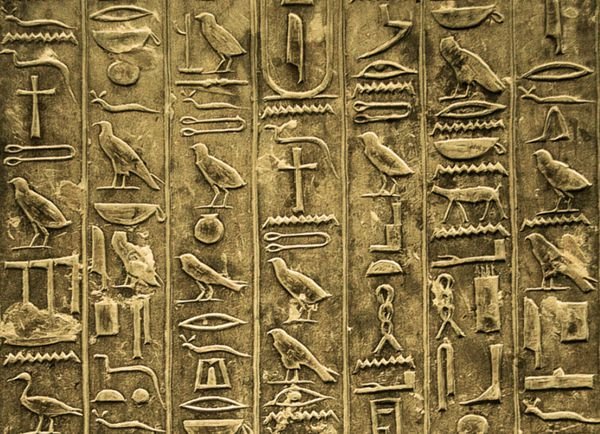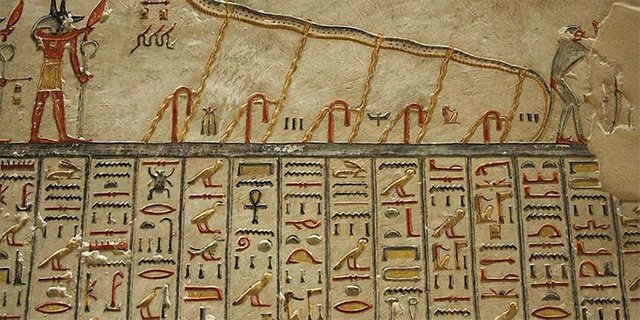Ancient Egyptian Magic and Mythology

Magical belief in Egyptian culture was deep-rooted and widespread, from Pharaohs and priests to the predominantly illiterate population. Magic, or heka, in Egyptian culture was both commonplace and applied to all sorts of practical uses. Spells existed for a plethora of applications, many of which were accessible to the common people. In “The Basis of Egyptian Faith and Magic,” Professor Piccione cites spells to ward off nightmares, spells for warding off crocodiles and crossing canals, spells for protecting pregnant women, and spells for warding off snakes and scorpions. Whether or not these spells had any physical effect on the environment is debatable, but one can be certain that these rituals were psychologically beneficial. By appeasing the gods, one could feel confident, justified, and secure in their daily endeavors. If things went poorly, supernatural beliefs could be consoling, as they suggest a divine reason for every catastrophe.
In his article Theology, Priests, and Worship in Ancient Egypt, Herman Te Velde suggests that all of the various spells, beliefs, and rituals, resulted from attempts to understand the Egyptian environment, which can be seen plainly in the visual depictions of gods and goddesses. The iconic figures of Egyptian religion derive from the various animals that lived alongside the Egyptians. Anubis, “The Divine Embalmer,” “Lord of the Necropolis,” was half man, half jackal. Jackals, much like vultures, are known for feasting on dead and dying animals. With this in mind, we can gain insight into the circumstantial and psychological motivations behind Egyptian magical beliefs and practices. The distinction between religion, magic, and science was virtually nonexistent for the Ancient Egyptians, and many religious practices had real, physical benefit. Circumcisions, for example, were performed for religious reasons, but likely also provided benefits to health and hygiene.
While heka was ubiquitous in Egyptian culture, the Pharaoh was considered the supreme religious head of the society. As Te Velde notes, all worship to the gods was done in the name and service of the Pharaoh. Even the priests were servants of the Pharaoh, appeasing the gods on his behalf. Priests, however, had much more access to the magical realm than the average citizen, as they could read magical scrolls, lead rituals, and in some cases communicate directly with deities. Certain priests, according to Te Velde, were considered mediums through which commoners could contact the local deity. The merging of science and religion is evident in the form of these deities, animal hybrids that symbolically mirror their animal counterparts. Just as Anubis, the jackal, is a god of death, Horus the hawk is god of the sun and considered quite noble. The symbology present here is indicative of a desire to understand the world around, and this desire would have undoubtedly extended to the common population.
Geraldine Pinch, in her book Magic in Ancient Egypt, notes that Egyptian amulets have been found that date-back earlier than four thousand B.C. Pinch also notes that archaeologists have discovered Egyptian religious texts from earlier than three thousand B.C. While commoners would not have had access to these scrolls or the ability to interpret them, amulets could offer spiritual protection regardless of social class or literacy, and the sheer longevity of these magical practices reveals how firmly rooted heka was in the Egyptian consciousness, from top to bottom.

Egyptian mythology is comparable to that of the ancient Greeks and Romans, in that the various gods and goddesses were not infallible, and in some ways they were as vulnerable as human beings. As Geraldine Pinch writes in Magic in Ancient Egypt, “[Egyptian deities] are subject to passions and emotions… They quarrel, fight, and even die.” The belief in magic was so strong, however, that terrible events like the death of Osiris could not be carved in stone, lest this eternal image preserve and strengthen some force of evil. This concern is overtly apparent in the reliefs and incriptions of Edfu, the site of an ancient temple. The hieroglyphics depict a battle between Horus and Seth, representing respectively the forces of good and evil, order and chaos. Pinch tells us that the images of Seth are miniscule, almost absurdly so, in relation to Horus, but this artistic decision was necessitated by the very real power of the imagery. Drawing Seth larger than Horus would not only affect the narrative, it could potentially jeopardize reality by giving the forces of evil a seemingly permanent, quite literally concrete, advantage over the forces of good.
Myths and magic were intertwined so as to be virtually indistinguishable, and unsurprisingly spells and rituals often derived directly from mythological origins. A scroll known as Papyrus Jumilhac, dated to first millenium B.C., contains a series of local myths pertaining to Upper Egypt, as well as spells and rituals related to these myths. Pinch provides the example of Apep, a monstrous mythological serpent representing chaos and evil. Rituals and spells for defeating Apep can be traced back to the early second millennium B.C., and are rooted in Egyptian creation myths where Apep is defeated by the good deities.
The line between superstition, science, and religion is blurred significantly in Egyptian mythology, as myths and magic served a plethora of purposes, both for individuals and for the society as a whole. The Pyramid Texts were inscribed in royal tombs between the twenty fourth and twenty second centuries B.C. These are the oldest surviving examples of “funerary literature,” and they were made for the purpose of aiding the deceased Pharaoh in his afterlife journey. The myths within are not lengthy narratives, but they involve human-like interactions and quarrels between the divine figures of Egyptian mythology.
The Pyramid Texts were gradually phased out, replaced by “The Coffin Texts” and “The Book of the Dead,” the latter of which repeats several passages and spells included in the former. The Coffin Texts, according to Pinch, contain more mythological references than The Book of The Dead, which is essentially a self-help guide for navigating the spirit world. The Book of the Dead was a chief funerary text from the end of the second millennium B.C. onwards, eventually to be supplemented by “The Book of Breathing” and other texts.
Egyptian creation myths are often contradictory, with different gods performing the same actions, depending on the era in history and the local biases of the storyteller. One characteristic common to most narratives, however, is that the myths reflect a genuine desire to understand the world and its history. The merging of physical science and superstition is so complete as to be invisible. Good fortune was attributed to pleased deities, while maladies were equated with the actions of evil spirits. For example, Pinch writes that, “a headache remedy relates how Seth,” god of evil, lust, chaos, et cetera, “was punished for inappropriate lust by having his own semen rush to his forehead and cause him agony.” Modern psychological studies have proven that shame and anxiety can cause headaches, so this strange myth is not as ridiculous or random as it might initially seem. Like all Egyptian myths, this one arose from a desire to understand and manipulate reality.
Cover Photo: Image Source
To listen to the audio version of this article click on the play image.

Brought to you by @tts. If you find it useful please consider upvoting this reply.
Congratulations @youdontsay! You have completed the following achievement on the Steem blockchain and have been rewarded with new badge(s) :
Click here to view your Board of Honor
If you no longer want to receive notifications, reply to this comment with the word
STOPTo support your work, I also upvoted your post!
Do not miss the last post from @steemitboard: